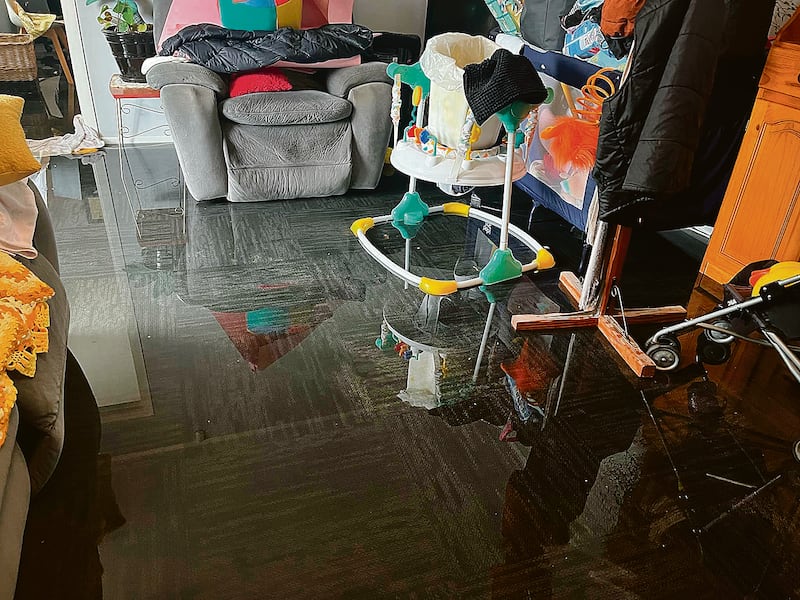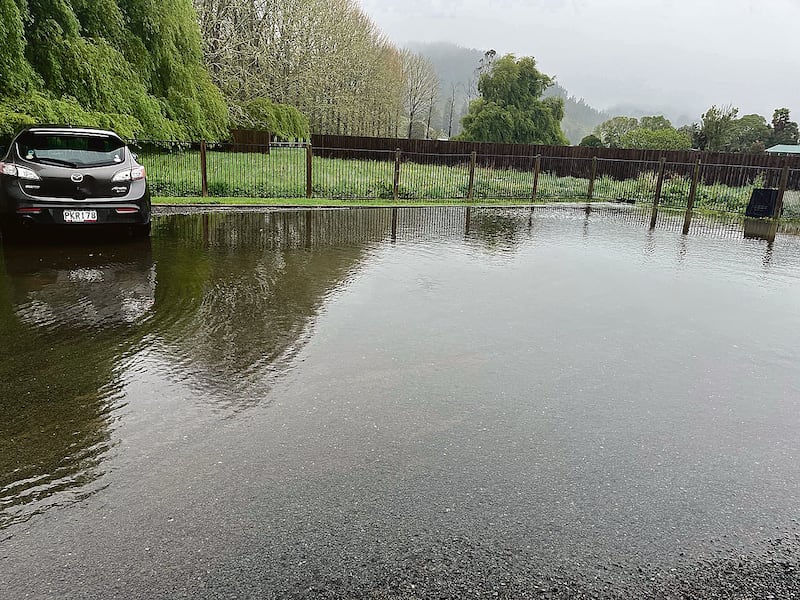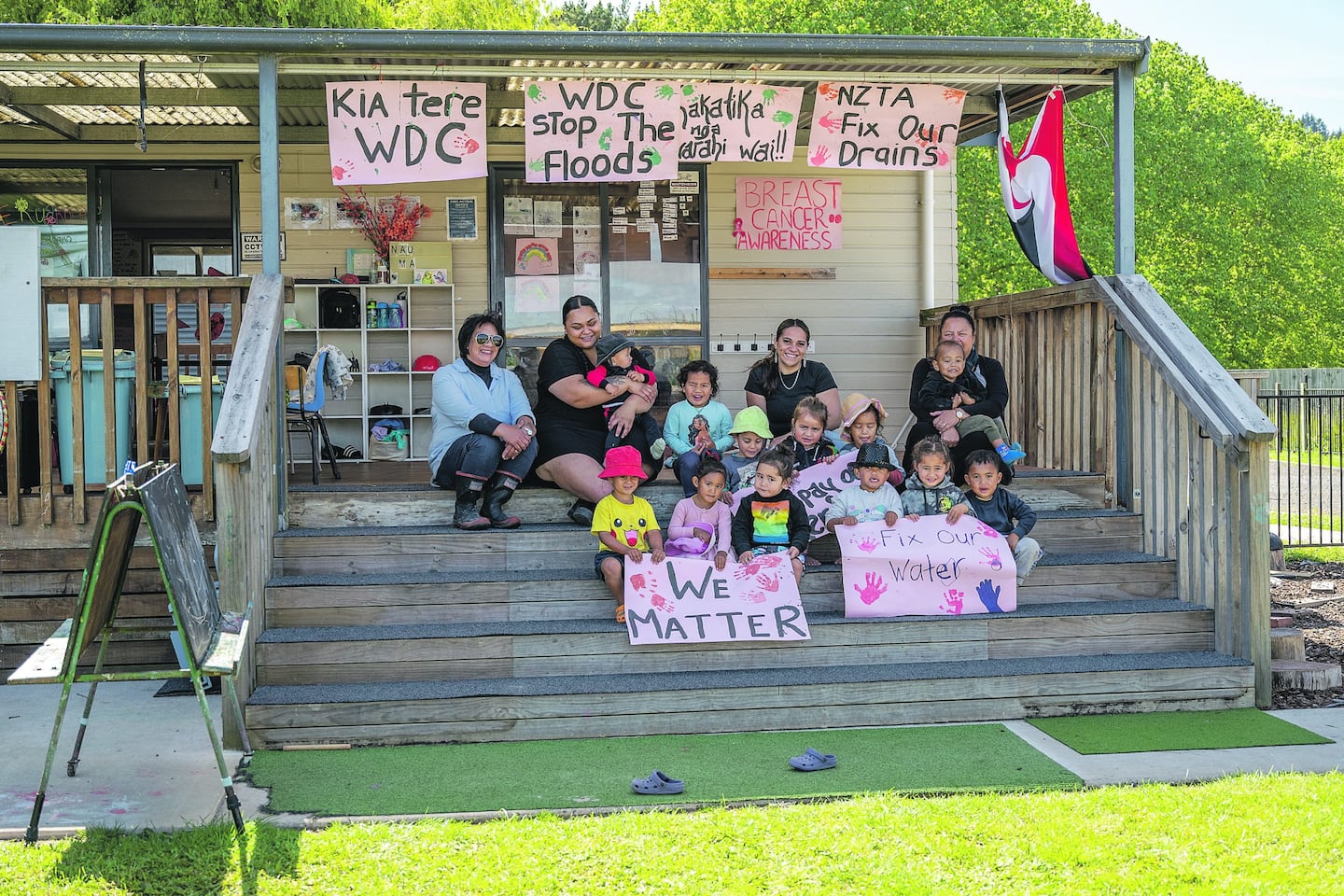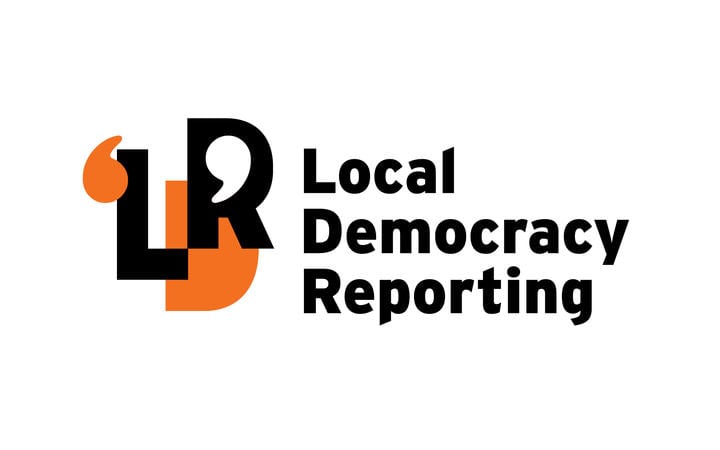A Tāneatua early childhood centre has now suffered three floods in as many years and its owners say the town’s stormwater system is failing residents.
Sisters Moana Stensness and Vicki Biddle-Clarke from Te Rua Kopere Whare Kohungahunga bought the property on the corner of Morrison and Station roads four-and-a-half years ago and opened the centre in May last year.
They now have a roll of about 15 babies and pre-schoolers attending their bilingual whare and have aspirations to develop the land into housing for whānau and staff.
They have been forced to close their doors twice since they opened due to flooding, once during Cyclone Gabrielle and again between October 3 and 4 this year, in spite of having carried out major drainage work on the property themselves.
They have been told Whakatāne District Council is working on the flooding problem, however, they say it is taking too long.
“We’re sick and tired of being told our drains will be fixed ... yet here we are, still waiting,” Mrs Stensness said.
Their first flood happened in 2020, before the business had opened.

At the time of purchase, they were told the property had flooding issues, but having grown up in Tāneatua they had never known the area to flood badly, so weren’t too concerned.
Mrs Stensness said the flooding from runoff of nearby farmland was not a problem in the area in the past.
“One year after purchase, three-quarters of the property flooded including the house - this was the beginning of our nightmare. We were told by [the council] that this was a one-in-100-year flood and it shouldn’t happen again.”
Between 2020 and 2022 Mrs Stensness’s husband Eric, a civil drainage engineer, carried out thousands of dollars worth of drainage work on the property.
“He did lots of detailed drainage work within our property and some outside to the culverts to eliminate or certainly mitigate the effects of further flooding on our property.”
However, it soon became apparent that the underlying issues lay beyond their property and into drains belonging to the district council and New Zealand Transport Agency.
“The current drains and culverts no longer sustain the volume of water being directed through Tāneatua when the river is flooding,” Mrs Stensness said.
Stormwater, that could have been directed to a drain that ran behind their property was instead coming right through their centre.
She said about six of the centre’s neighbours also suffered flooding on their properties, though, fortunately it did not enter their houses as they were on piles.

“Many of us have complained for years, separately, but are now standing together.
“The plain and simple truth about why we now see major flooding on these Tāneatua streets is a severe lack of maintenance, outdated culverts,” she said.
“My husband did a thorough report on the issues with mitigating-eliminating suggestions that we submitted to the WDC way back in 2022.
“We feel like we’re getting palmed off and not taken seriously – but it’s dead serious when you’re stopping a small locally owned Māori business from thriving.
“We have not only suffered financially but it’s our tamariki and their whānau we feel sorry for. When we have emergency closures like these floods they must find alternative care for their tamariki. This is stopping our tamariki from learning and causing unnecessary worry, anxiety and frustration.
The council’s capital projects team leader Jim Finlay said with recent increases in runoff affecting Tāneatua, the council had launched a project to identify contributing properties, prioritise essential maintenance, and explore capacity improvements.
“Since all required works will be on private land, successful outcomes will depend on close collaboration with landowners.
“The Tāneatua stormwater and flood drainage system collects water from a large, diverse area, including forest, bush, and farmland, before channelling it through rural and township areas, across the old railway land, and ultimately discharging into the Whakatāne River.
“This system, which involves more than 20 properties and passes through at least 10, is historically flat and has multiple farm crossings, contributing to its current challenges.”
He said historic legislative changes had led to conditions that left Tāneatua residents feeling neglected.
“In the past, Drainage Boards were responsible for maintaining these types of systems, co-ordinating access, maintenance and funding with property owners. However, after legislative changes led to the establishment of Catchment Commissions and the dissolution of Drainage Boards, many smaller drainage networks were left without formal oversight.”
He said the council was open to meeting with the early learning centre’s owners and other residents to discuss the situation further and consider next steps for managing this important community issue.




